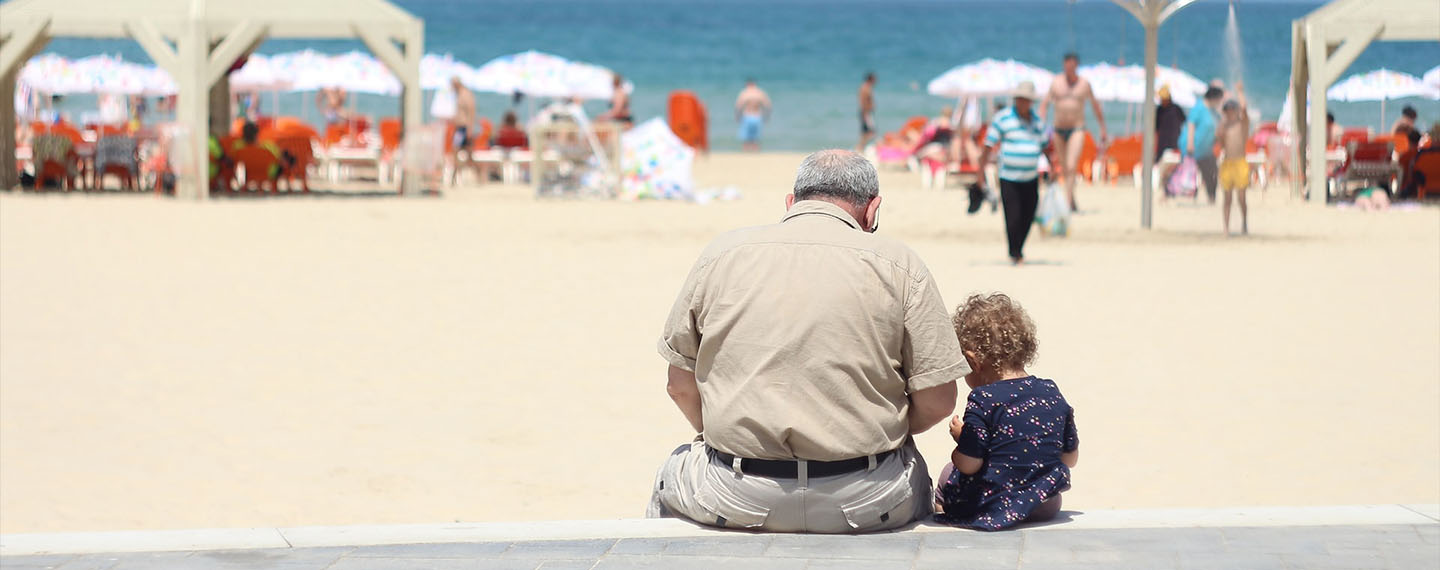The arrival of millions of immigrants saved Spain’s population from plummeting, but the birth rate is still well below the replacement rate.
But for the massive influx of immigrants over the past two decades, Spain’s population would have shrunk enormously, creating shortages in the labour market and straining the pay-as-you-go pension system, as fewer workers would be supporting pensioners. The number of foreign-born residents rose from 1.2 million in 1998 (2.9% of the 40.2 million population) to 7.2 million in 2020 (15.2% of the 47.4 million).
For the past five years, there have been more deaths than births. This negative natural population change (see Figure 1), accentuated in 2020 and 2021 by COVID-19, looks set to remain for the foreseeable future.
| 2014 | 2015 | 2016 | 2017 | 2018 | 2019 | 2020 | 2021 (P) | |
|---|---|---|---|---|---|---|---|---|
| Births | 427,595 | 420,290 | 410,583 | 393,181 | 372,777 | 360,617 | 341,315 | 336,811 |
| Deaths | 395,253 | 422,266 | 410,080 | 423,953 | 427,103 | 417,972 | 493,127 | 449,834 |
| Natural population growth | +32,342 | -1,976 | +503 | -30,772 | -54,326 | -57,355 | -151,812 | -113,023 |
Spain’s fertility rate has been steadily declining since 1970, from 2.86 to 1.19 last year, the lowest in the EU (see Figure 2). Until well into the second half of the 20th century, women in Spain tended to have the highest number of children in the EU. For a population to remain stable, the average family needs to have 2.1 children. Spanish families are not only much smaller but also less ‘traditional’ in their structure. For example, the share of newborns with unmarried parents increased from 18% in 2000 to close to 50% today.
| 2020 | |
|---|---|
| 2020 | |
| France | 1.83 |
| Germany | 1.53 |
| Italy | 1.24 |
| Poland | 1.39 |
| Spain | 1.19 |
| EU average | 1.50 |
Average life expectancy is the highest in the bloc at 83.3 years, 10 more than in 1970 (see Figure 3).
| 2021 (E) | |
|---|---|
| Spain | 83.3 |
| Italy | 82.9 |
| France | 82.5 |
| Germany | 80.9 |
| Poland | 75.6 |
| EU average | 80.1 |
More than 9 million people are over the age of 65 compared to 7 million between the ages of 14 and 29 (more than 10 million in 1995). As of 2050, according to the United Nations’ latest population projections, the number of over 65s will move close to those aged between 25 and 64 (see Figure 4).

The low birth rate is not just a Spanish problem. All EU countries today have fertility rates below 2.1 (Spain since the 1980s and France as of 2010). The EU’s total population shrank in 2021 for the second year running: by close to 172,000 from 2020 and over 656,000 from January 2020, largely due to COVID. In the developed world, only Israel has consistently remained above the replacement rate.
Surveys show that most Spanish women (more than 70%) would like to have two children, but fewer than 30% actually do. Pope Francis lamented earlier this year that many couples are choosing to have pets over children. Why is this particularly the case in Spain and what can be done about it?
Spanish society has undergone profound changes since the end of the Franco dictatorship in 1975, and at a faster pace than many countries. That regime, which lasted 36 years, was in thrall to the Roman Catholic Church. Abortion, contraception and divorce were illegal. Franco awarded an annual National Birth Prize to couples with the largest families in three categories: one for the most babies born into a single family; another to the family with the most surviving children (a testament to the high infant mortality rates at the time); and one for the couple with the largest number of descendants still living at home.
Abortion, contraception and divorce were legalised years ago. Couples today put off having a child or not at all because of socioeconomic factors: the lack of stable employment (precarious temporary contracts still account for one-quarter of jobs, despite endless labour market reforms); and unaffordable housing and an unsatisfactory work-life balance. Unemployment is half the peak in 2013 of 26%, following the global financial crisis, but is still high (double the EU average), and for those under 25 it is almost 30%. The share of mothers employed in Spain (around two-thirds) is lower than in many other EU countries.
One in 10 first-time mothers in 2021 in Spain were over the age of 40, double that in 2011, and the chances of these women having a second child are slim for biological reasons. One in 10 of all births are the result of assisted reproductive treatment (around 40,000 children each year), according to the Spanish Fertility Society, making Spain a European leader in this field.
The average age of first-time Spanish mothers is 33 and that of foreign mothers almost 31 (generally far higher than in Latin America, for example, where some 18% of births are to mothers under 20). The birth rate of foreign mothers in 2021 was not significantly higher than that of Spanish mothers (see Figures 5 and 6). Both rates were slightly lower than in 2020, mainly due to the postponement of childbearing because of the COVID-19 pandemic.
| Year | Spanish mothers | Foreign mothers | Total |
| 2014 | 32.3 | 29.3 | 31.8 |
| 2015 | 32.4 | 29.4 | 31.9 |
| 2016 | 32.5 | 29.6 | 32.0 |
| 2017 | 32.6 | 29.7 | 32.1 |
| 2018 | 32.7 | 29.9 | 32.2 |
| 2019 | 32.8 | 30.2 | 32.2 |
| 2020 | 32.8 | 30.3 | 32.3 |
| 2021 (P) | 33.0 | 30.7 | 32.6 |
| Year | Spanish mothers | Foreign mothers | Total |
| 2014 | 1.27 | 1.62 | 1.32 |
| 2015 | 1.28 | 1.66 | 1.33 |
| 2016 | 1.28 | 1.72 | 1.34 |
| 2017 | 1.25 | 1.71 | 1.31 |
| 2018 | 1.20 | 1.65 | 1.26 |
| 2019 | 1.17 | 1.59 | 1.24 |
| 2020 | 1.13 | 1.47 | 1.19 |
| 2021 (P) | 1.16 | 1.38 | 1.19 |
Spain’s family benefits are generally modest and not universal, far from those countries which can afford to be generous as their tax burden is much higher, such as Denmark and France (see Figure 7).
| % of GDP | |
|---|---|
| Denmark | 46.5 |
| France | 45.4 |
| Italy | 42.9 |
| Sweden | 42.6 |
| Germany | 38.3 |
| Spain | 36.6 |
| OECD | 33.5 |
A universal one-off cash benefit of €2,500 was available in Spain from 2007 to 2010, known as the cheque bebé, for the birth or adoption of a child. This was paid to 1.5 million mothers at a cost of around €4 billion but had to be eliminated as part of measures to lower the ballooning fiscal deficit. Currently, the birth or adoption of a child gives right to a lump-sum payment of €1,000, subject to an income limit that depends on the size of the family, in the event of multiple births or adoptions.
Family benefits and services play a small role in Spain’s social protection system. OECD countries spend on average 2.34% of GDP on family benefits compared to 1.31% in Spain (see Figure 8).
| % of GDP | |
|---|---|
| % of GDP | |
| France | 3.60 |
| Sweden | 3.40 |
| Germany | 3.17 |
| Poland | 2.99 |
| Italy | 2.47 |
| OECD | 2.34 |
| Spain | 1.31 |
Following the end of the universal birth allowance, the proportion of recipients of family benefits nearly halved between 2007 and 2016 in most income quintiles except for the lowest one. In 2020 the government introduced a minimum income scheme to address the risk of childhood poverty and social exclusion, but it is not a specific tool for family support. In 2018 (latest figure) nearly one in five children lived in relative income poverty in Spain, compared with 12.9% across OECD countries on average.
On the tax front, there are various deductions directly or indirectly linked to family support, but their amount is quite low and many are means-tested or have other eligibility requirements. Consequently, the number of potential beneficiaries is quite low.
More than half of guarderías (kindergartens) in Spain (for children under the age of three) are private, making them too expensive for many parents, although one third of them are publicly subsidised. Parents who send their children to a guardería receive aid of €1,100 a year. Formal after-school care is scarce. School hours are often shorter than a typical workday, particularly in the many public primary schools that in many cases only operate until lunchtime. A recent education law reinforced the obligation of public authorities to increase childcare services, but it remains to be seen whether anything will be done.
Grandparents (abuelos) play a huge role in looking after children, particularly when both parents work. Half of all grandparents look after their grandchildren every day –one in eight for more than nine hours a day–. They can often be seen taking and collecting their grandchildren from school. Appreciation of them is enshrined in Grandparents Day on 26 July, the feast day of Saint Joachim and Saint Anne, the parents of Mary, the mother of Jesus. Taken for granted, if abuelos went on strike the economy would grind to a halt. They ignored a call by unions in September 2010 to join the one-day general strike in protest at labour market reforms.
A positive step has been the increase in paternity leave for fathers to 16 weeks as of January 2021 (up from only two weeks in 2007 when the first paternity law came into effect), equalling the leave mothers get and both remunerated at 100% of the base salary. Self-employed parents enjoy the same rights as those employed by a company provided their social security contributions are up to date. Spain’s paternity leave entitlement is now the longest in the OECD, but unlike other countries Spain does not offer additional paid parental leave.
Teleworking, which became widespread at the height of the COVID-19 pandemic during the state of emergency (less than 10% of the work force before 2019), was seized upon by parents with young children as it improved their work-life balance, but with the return to something approaching normality there has been a big return to work unless companies agree to let staff continue working at home. The 2020 law regulating home working limits the flexibility available to companies and obliges them to cover costs that not all are prepared to assume.
If Spain’s birth rate does not rise significantly, more immigrants will probably be needed. The government estimates that an extra 6 million to 7 million workers will be needed by 2040 in order to meet the pension bill even if it succeeds in getting people to retire later, 250,000 of them a year from abroad.
Raising the birth rate requires not only better socioeconomic conditions but also comprehensive and sustainable family policies and not one-off cash payments and piecemeal measures.
Image: An old man sitting besides a girl on a bench in a beach. Photo: Mary Blackwey (@belokonenko)



